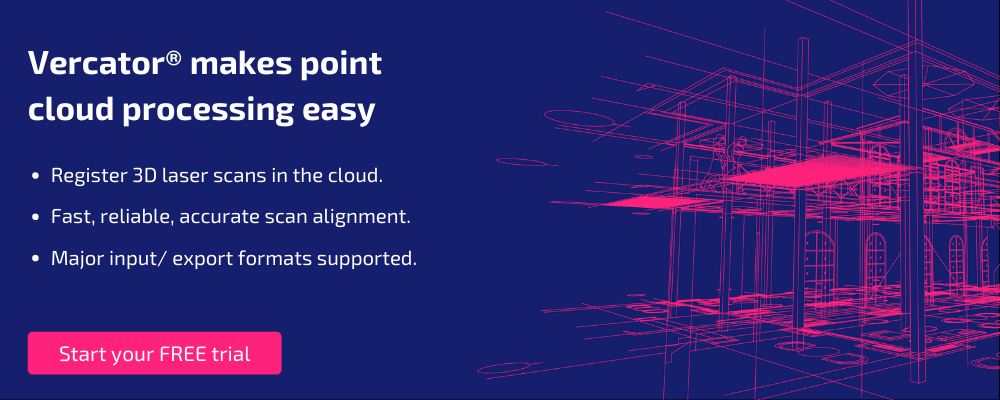SaaS and SeS contrasted: why Correvate chose SeS, and what that means for our users

Since the coining of the term in 2005, Software-as-a-Service or SaaS has become a widely accepted method of delivering specialised computing services. Companies as diverse as Sage (for accounting software) and SalesForce (for sales management) use the SaaS business model.
SaaS delivers proprietary software for use on IT systems directly controlled by the end user. The IT system could, for example, be each user's desktop or laptop. For cloud-based systems, their IT system could be hosted in a sector of the cloud exclusively controlled by them. Under the SaaS model, each customer is licensed to use the supplier’s proprietary software on their own IT system under an extensive ‘EULA’ (End User Licence Agreement).
Correvate has not adopted the SaaS model. Instead, our Vercator Cloud services are supplied under the business model characterised as ‘Software-enabled-Service’ or ‘SeS’. Here, we want to explain what that means, why it’s an important distinction, and how it benefits our users.
SeS - a terrestrial analogy
To understand the nature of Software-enabled-Services, it’s convenient to start with an analogy.
Imagine a cobbler who sets up business on the high street with a novel type of shoe repair machine. This machine is installed at the back of the shop. Its embedded proprietary software enables the machine to complete the usual repair job semi-automatically, to a higher quality than is available elsewhere, and within a short timescale (maybe while the customer waits in their socks).
Here’s how the sales process would work:
- Customers enter the shop wearing their distressed shoes which the cobbler then inspects.
- A price for repair is agreed which the customer pays in full: here’s the familiar process of offer and acceptance. There are no formal terms of business, save perhaps for a notice on the counter declaring that the cobbler disowns liability for damage to the shoes caused by stress under the repair process.
- The cobbler completes the job, using the new machine which is neither in sight of, nor in any way under the control of the customer.
- The customer inspects the repair, then leaves wearing the repaired shoes. And our virtual cobbler smiles.
These steps describe how a service is supplied direct-to-a-customer terrestrially. In principle, the same process can take place in the cloud.
SeS in the cloud
Here is how we give our customers access to our software in the cloud.
- Correvate has uploaded its proprietary Vercator software engine into a sector of the cloud exclusively under its control – ‘the back of the shop’.
- When applying for a free trial of Vercator software and again when purchasing tokens in advance of commercial use, customers confirm their acceptance of our one-page Terms of Business (relating, for example, to defects in the datasets and ownership of the processed datasets). There is no licence to use the engine itself.
- Customers then bring their raw 3D point cloud datasets into reach of the engine (typically by providing the coordinates of the cloud where they have already stored such datasets). The system calculates how many tokens will be required to complete the job: this is our offer. So long as the customer’s account carries enough credit (in the form of tokens) to pay for the job, the customer then authorises the automated process to start: this is their acceptance.
In many cases, the software then autonomously completes the job. For some registration process, the customer may be invited to choose some settings that will enhance the quality of the output and, at a later interim stage, to verify that a coarse registration is error-free. But the customer has no direct access to the Vercator software, nor any control over it. So there is no need for the customer to be licensed to operate the software. No EULA!
On completion of the job, the processed datasets are made available exclusively to the customer. They may transfer them immediately to their own IT system and/or allow others to inspect the results and/or store the data in the Vercator data vault and/or extend the job to take advantage of ancillary Vercator services offered from the cloud. It is their choice.
How this better than SaaS?
The SaaS model provides users with access to use the supplier’s proprietary software on their own IT system which they use to produce the outcome. In contrast, the SeS model delivers the outcome.
If Vercator operated under the SaaS model, Correvate would provide users with access to the Vector registration engine subject to terms of an extensive EULA (giving more work to its customer’s lawyers!). Users would have to learn how to use Vercator software, and then be responsible for deploying Vercator software to register their own datasets.
SeS takes SaaS one step further by reducing administrative hassle and delivering outcomes on demand with simpler workflows.
Other suppliers of SeS
SeS is not novel. SeS are already widely used every day throughout the world. Here are two examples:
Google search engine
- Setting the key words for a Google search is now a familiar task to many. When the ‘start search’ is initiated, results are delivered in fractions of a second.
- There is no fee payable to Google by users; instead, they pay with an element of their privacy.
Expedia holiday booking
- Here the user specifies the key elements of the preferred holiday package: place, accommodation, dates of travel, etc.
- Expedia’s search engine then creates packages on a ‘best fit’ basis.
- The user selects a package and pays the total price as quoted via Expedia’s webstore.
Correvate’s approach to SeS
Correvate’s approach to SeS is transparent; we make it clear to customers how they will be charged for their use of Vercator services. Customers are not obliged to use the Vercator service uniquely for their registration or other processing requirements (save, perhaps, to the extent that they wish to make use of tokens that they have bought in advance in order to benefit from discounts available for bulk purchases). The SeS model allows users to benefit right away from any improvements in Vercator software without having periodically to download revised versions of it — a benefit that is familiar to, for example, users of Microsoft’s Office programs delivered from the cloud.
SeS provides simplicity and customer-centricity, making our software easily available within a flexible and versatile framework.
Tags: Vercator

